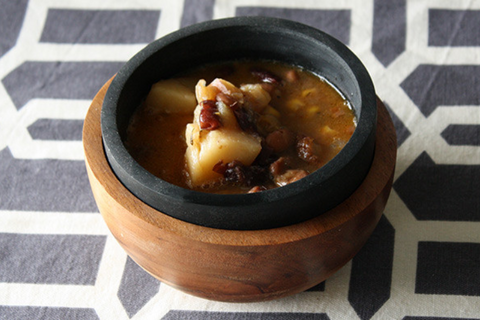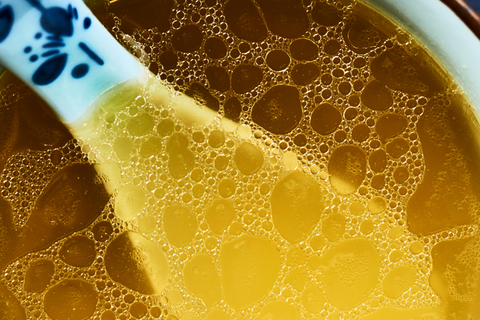This particular culinary adventure started for me when I was getting ready to go to a stock dog training clinic in Nebraska - I was going to be camping with our dog, Ray, for three days with no electricity or running water so I wanted shelf stable options that weren't heavily processed. I love canning with tougher cuts which typically come from the rump of any animal.
Of note - You can cold pack or hot pack soup. Cold packing is when you put your raw ingredients in the jar then use the pressure canner to cook the food, while hot packed products are pre-cooked before being put in the can for pressure canning.
If you are going to can animal products, you will need to pressure can them. We have an antique pressure canner that we inherited from George's Grandma and I love it. If you do not have a pressure canner, you can get them at Fleet Farm - lot's of bloggers recommend the All-American pressure canners which you can easily order online.
Canning Soup - Cold Pack
- Start by cutting up all your raw ingredients - this includes your raw meat, any veggies - and grab all your spices. A general rule of thumb is that you put 1/2 the amount of spice in your canned soups and stews because the pressure canner will extrude your spice flavors more readily than regular cooking processes do.
- Clean and inspect your jars - Look for nicks, cracks, and imperfections. discard any jars that have imperfections as they may crack or shatter in the canner. I clean my jars in extremely hot water with Dawn Dish soap, then keep them warm in clean hot water.
- Fill jars with your raw ingredients until there is 1 1/4" of headspace in the jar. Fill the jar with hot water until there is 1 1/4" head space. Add 1 tsp of salt and whatever spices you want.
- Wipe the rims and add the can and ring top - I prefer to wipe the rim with a vinegar soaked paper towel before I put a can top and ring on finger tight.
- Fill your canner with cans and put 2-3" of water in the canner with the cans. (DO NOT COVER the cans with water - water bathing is for veggies/jams/jellies.)
- Follow your manufacturer instructions on venting and pressurizing your canner - My canner has a peacock. Once steam is steadily coming out of the peacock I let it steam (vent) for 10 minutes.
- Once my canner has vented for 10 minutes, I close the peacock and wait for my canner to achieve the correct pressure. See your canner instructions or USDA guidelines for pressure and timing based on jar size and food type.
- Once the canner has achieved pressure, I turn down my stove to stall the canner at the correct temperature - This may take some fiddling around if atmospheric pressure is wonky that day, or if you are trying to can on an electric stove.
- I usually check my canner every 5-10 minutes while the canner is under pressure to make sure it's maintaining a safe level. If I am going to reload the canner again, this is when I start preheating my cans in ultra hot water so the cans don't crack when I put them in the hot canner.
- When the cooking time is up, I shut off my burner then either...
- Carefully open the peacock to let off steam so I can load with my next batch of cans OR
- if it's my last batch of cans, I'll just leave it sit to naturally release as it cools down.
- Take the lid off the canner and pull the cans out using a canning tongs. I place my cans upright on a bath towel on my counter.
- Reload the canner with prewarmed cans, and follow steps 4-10 again.
- Label your cans noting the contents and day that they were processed.
Notes:
- Not all cans will seal on the first try. If your cans to do not seal properly, you can re-process them within 24 hours of the original attempt. Honestly we normally just eat them right away so we don't have to worry about it.
- If you have hard water you may see a white film develop on the outside of your jars after they have been pulled out. This is just hard water deposits. I usually wash mine off the next day when everything is cooled.
- Store cans in a cool, dry, temperature controlled/stable area.



Comments (0)
There are no comments for this article. Be the first one to leave a message!